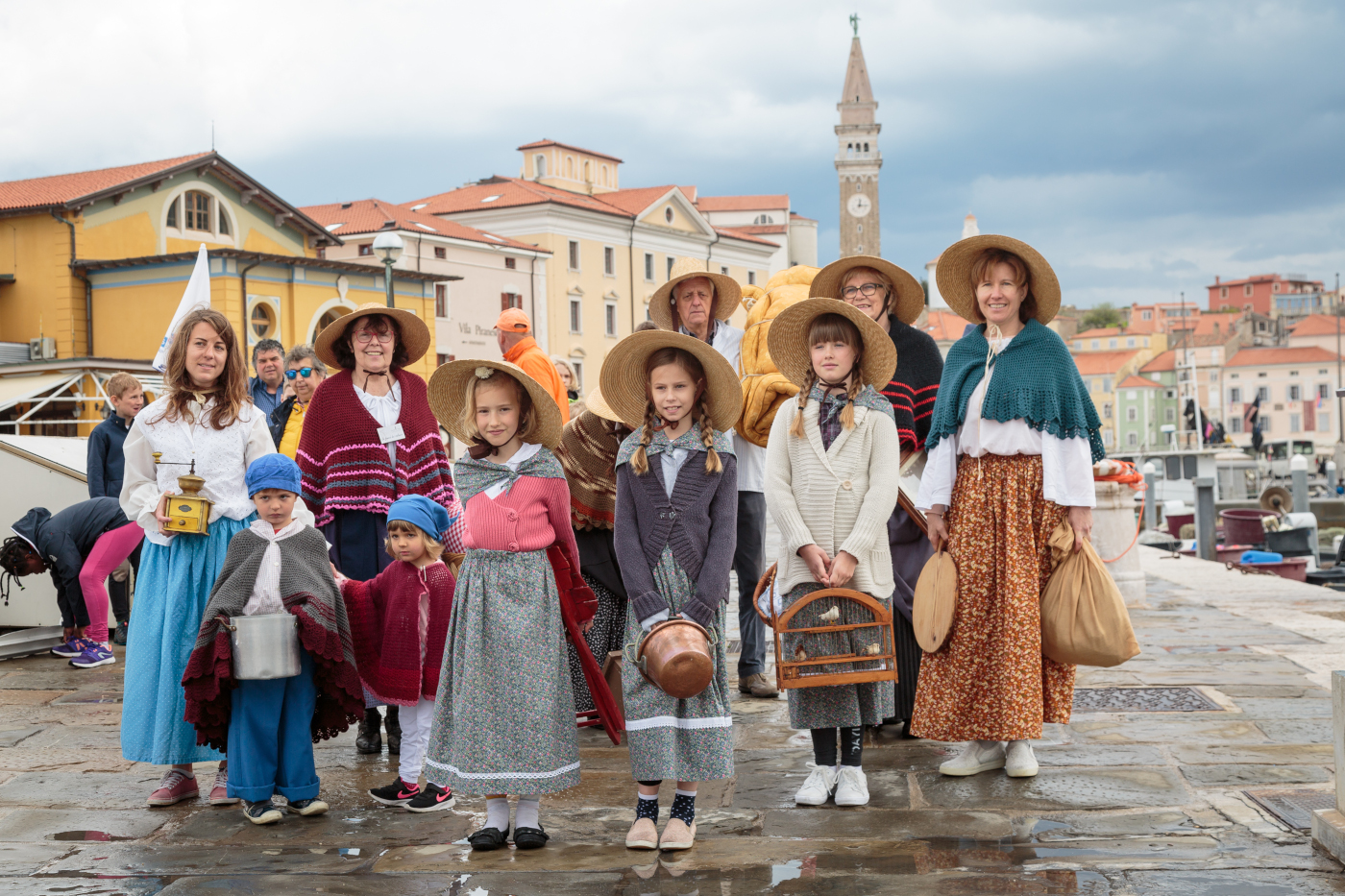Težko leto za vse

Nada Dellore: Ko otrok ustvarja, mu mora biti toplo pri srcu
12/30/2021
Tombola je bila kraljica družabnih iger
01/19/2022
Piranska skupnost italijanske narodnosti je bila vedno močno vpeta v kulturno dogajanje v občini. Njene kulturno-umetniške skupine so gostovale tudi izven Pirana in celo v tujini, kjer so predstavljale njegovo bogato kulturno dediščino. V Tartinijevi hiši je bilo ves čas zelo pestro, saj se je v njenih sobanah vselej kaj dogajalo. Medtem ko so nekje plesali, šivali, risali ali igrali kitaro, so drugje peli, pletli, vadili novo gledališko predstavo, oblikovali čudovite izdelke iz keramike in podobno. Vse do tistega marca, ko so bile vse skupine prisiljene prekiniti s svojimi aktivnostmi.
Dogajanje v eni najlepših hiš v Piranu in okolici je znova oživelo šele jeseni 2021, ko so se skupine vrnile k svojim rednim aktivnostim, ki pa kljub velikemu entuziazmu niso potekale brez težav. O tem, kako je v njihovo delovanje posegla epidemija in vse različice novega virusa ter kaj jim bo kljub vsemu ostalo najbolj v spominu, smo povprašali mentorje skupin, ki svoj prosti čas radodarno namenjajo prenašanju svojega znanja in veščin na druge.
Ena takih je gotovo Giorgina Rebol, brez katere bi bogato dediščino solin in solinarstva na piranskem področju poznalo veliko manj ljudi, kot jih po njeni zaslugi. Giorgina in druge članice in člani skupine La famea dei salineri (Solinarska družina) so namreč vedno pripravljeni sodelovati vsakič, ko je treba ljudem predstaviti solinarsko tradicijo. V času epidemije je njihovo poslanstvo mirovalo, saj je bilo veliko dogodkov odpovedanih. Giorgina se je z grenkobo v srcu spomnila na tradicionalne praznike, kot so solinarski, praznik kakijev, artičok, pa tudi na srečanja na šolah, v vrtcih in knjižnicah.
‘Da se ne bi preveč odtujili, temveč obdržali stike, smo se dobili na soku ali kavi in kakšno rekli. Ves ta čas smo ostali v stiku, čakajoč na boljše čase,’ je dejala.
S čakanjem so nehali poleti, ko so sodelovali v projektu Solinarska kulinarika (La cucina delle saline), jeseni pa še pri Dnevih evropske kulturne dediščine 2021 s projektom Dober tek (Buon apetito). Giorgina je prav tako obudila spomine na še eno snemalno izkušnjo, saj je eno izmed osrednjih vlog v seriji oddaj Regionalnega programa RTV Slovenija z naslovom La cucina dei nostri nonni (Kuhinja naših non) imela prav La famea dei salineri.
‘Najlepše je bilo, ko smo se s prijatelji srečali v naših solinah. Predstavili smo našo kulinariko in se spomnili časov, ko je tam bivalo veliko pridnih solinarjev in njihovih družin,’ je še poudarila Giorgina Rebol.
Tudi v skupini Al tempo di Tartini (V Tartinijevem času) niso ušli krempljem novega virusa. Kot je dejala Daniela Ipsa, ki jo poznamo tudi kot mamo Tartini, ni bilo prav nič prijetno prestavljati tedenska srečanja skupine in vsa sodelovanja na že dogovorjenih dogodkih ter ‘upati, da bo le prišlo do tiste dokončne spremembe, ko bomo lahko uresničili projekte, ki smo si jih zamislili’.
Pred zloglasnim zaprtjem marca 2020 je skupina, ki skuša ohranjati dediščino 18. stoletja, torej časa, v katerem je živel tudi znameniti Giuseppe Tartini, sodelovala na vseh kulturnih dogodkih, ki jih že tradicionalno pripravljajo v italijanski skupnosti. Bili so pri prevzemu oblasti ob začetku pusta, na velikem pustnem plesu, s svojo prisotnostjo so obogatili koncert v strunjanski Tartinijevi vili ter sodelovali v televizijskih oddajah in videopredstavitvah.
Tako kot Giorgina je tudi Daniela izpostavila pomen druženja, srečevanja, stikov. To, kar najbrž vsi najbolj pogrešamo.
‘Srečanja v živo, izmenjava zamisli in mnenj, druženje … Ne nazadnje so bile vse naše izkušnje edinstvene in neponovljive. Če pa že moram izbrati, bi izpostavila neposreden prenos oddaje Dobro jutro na TV Slovenija, kjer so bile prisotne vse skupine naše skupnosti, takoj zatem pa predstavitveni video igralcev in statistov v Pretorski palači, s katerim smo dobili priložnost, da se predstavimo obiskovalcem in turistom,’ je še dejala gospa Tartini.
Besedilo in foto: Nataša Fajon






